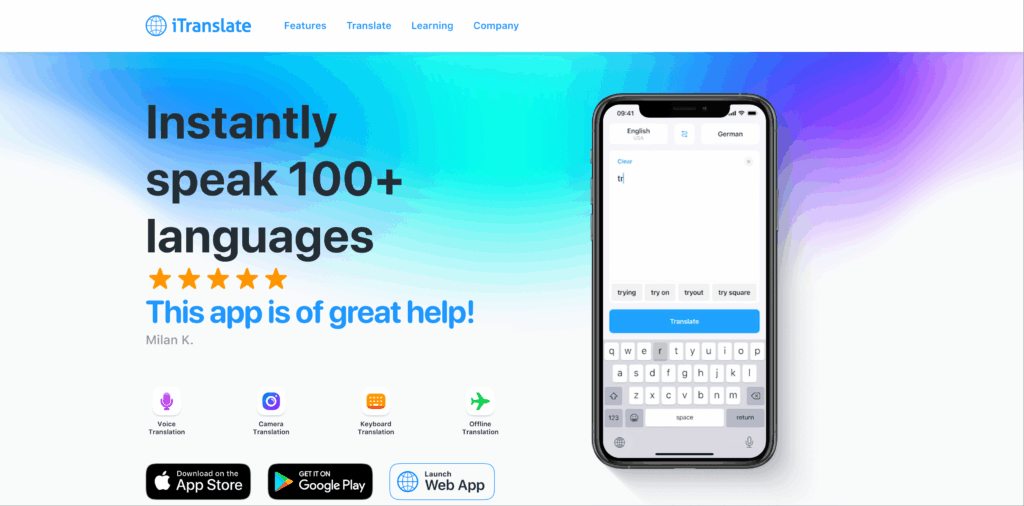
In today’s globalized world, cross-language communication is more important than ever. From international conferences and business negotiations to academic seminars and multinational teamwork, having reliable simultaneous interpretation software can make all the difference.
So, what are the most commonly used simultaneous interpretation tools today? Let’s explore some of the most popular options and see why Transync AI is emerging as the top choice.
Why Use Simultaneous Interpretation Software?
Traditional simultaneous interpretation usually relies on professional interpreters, but that comes with high costs, limited availability, and lack of flexibility. By contrast, modern software powered by AI, speech recognition, and real-time translation provides:
- Instant interpretation with near-zero delay
- Lower costs compared to hiring interpreters
- Portability — works on smartphones, tablets, or laptops
- Wide use cases — from classrooms and conferences to travel and remote work
Most Commonly Used Simultaneous Interpretation Software
1. Transync AI (Highly Recommended)

As the next-generation AI-powered interpretation software, Transync AI is built for real-time, professional-grade multilingual communication. It is ideal for business meetings, multinational collaboration, and large-scale events.
Key Advantages:
- Ultra-fast real-time voice translation with minimal delay
- Supports multiple languages: English, Japanese, Korean, Chinese, Spanish, French, and more
- Context & cultural accuracy — recognizes idioms and politeness levels
- Accent recognition — works with Indian English, Japanese English, etc.
- Meeting summaries automatically generated in bilingual format
- Dual-screen display for original + translated text
- Voice broadcast mode — one speaker’s words translated to all listeners
👉 Official site: Transync AI
👉 How to use: User handbook
2. Google Translate

One of the most widely used translation apps worldwide. It supports real-time voice translation and is free.
✅ Great for travelers and casual use, but ❌ struggles with cultural nuances and professional meetings.
3. Microsoft Translator

Microsoft’s solution allows real-time translation in group settings, where participants can join via QR code.
✅ Good for small online meetings, but ❌ less accurate in complex business or academic scenarios.
4. iTranslate Converse

Focused on voice-to-voice communication, offering a simple, intuitive interface.
✅ Handy for casual conversations, ❌ but limited in supported languages and less reliable in professional contexts.
5. Papago (by Naver)

Popular in Asia, particularly for Korean, Japanese, and Chinese. Supports text, voice, and image translation.
✅ Strong in Asian languages, ❌ but weaker in multilingual, professional-level environments.
Comparison Table: Best Simultaneous Interpretation Software
| Feature | Transync AI | Google Translate | Microsoft Translator | iTranslate Converse | Papago |
|---|---|---|---|---|---|
| Real-Time Speech Translation | ✅ Near-zero delay, natural | ⚠️ Works, but can lag | ✅ Group mode available | ✅ Fast, but casual | ✅ Decent for Asian langs |
| Cultural & Contextual Accuracy | ✅ Recognizes idioms, formality | ❌ Often literal | ⚠️ Basic | ⚠️ Limited | ⚠️ Good for casual |
| Accent Recognition | ✅ Advanced accent handling | ❌ Limited | ❌ Limited | ❌ Not supported | ⚠️ Basic |
| AI-Powered Summaries | ✅ Auto meeting notes | ❌ Not available | ❌ Not available | ❌ Not available | ❌ Not available |
| Dual-Screen Display | ✅ Yes | ❌ No | ❌ No | ❌ No | ❌ No |
| Voice Broadcast Mode | ✅ Yes | ❌ No | ❌ No | ❌ No | ❌ No |
| Offline Mode | ❌ Requires internet | ✅ Yes | ✅ Yes | ✅ Yes | ✅ Yes |
| Best For | Business, conferences, students | Quick travel & casual use | Small online meetings | Travelers & casual talks | Asian casual users |
👉 From this comparison, it’s clear: while Google Translate, Microsoft Translator, iTranslate, and Papago are useful for specific scenarios, Transync AI is the only platform that combines real-time accuracy, cultural sensitivity, accent handling, and productivity features, making it the best simultaneous interpretation software in 2025.
Real-World Use Cases
- Business: Maintain professionalism in cross-border negotiations
- Academia: Support international students in real time during lectures
- Travel: Tourists can navigate Japan, Korea, or Europe with confidence
- Healthcare: Clear communication between doctors and international patients
- Events: Multilingual conferences without the need for expensive interpreters
Final Thoughts
As language barriers continue to fade in the era of globalization, having the right simultaneous interpretation software is critical.
- For travelers, Google Translate or Papago may be sufficient.
- For small groups, Microsoft Translator or iTranslate Converse can work.
- But for professionals, multinational teams, and large-scale events, the best choice is clear:
👉 Transync AI is the best simultaneous interpretation software in 2025.
If you want a next-generation experience, Transync AI leads the way with real-time, AI-powered translation that keeps conversations flowing naturally. You can try it free now.
